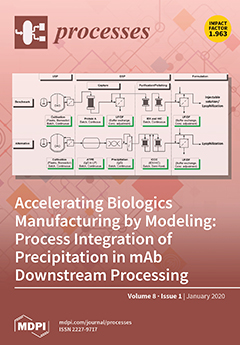Objectives: The current study aimed to measure the antioxidant and antibacterial activities of 25 wild Palestinian edible plants, which were subjected to extraction by polar and non-polar solvents. Correlations between free radical scavenging activity and antibacterial activity of the extracts were assessed for
[...] Read more.
Objectives: The current study aimed to measure the antioxidant and antibacterial activities of 25 wild Palestinian edible plants, which were subjected to extraction by polar and non-polar solvents. Correlations between free radical scavenging activity and antibacterial activity of the extracts were assessed for both polar and non-polar fractions. Materials: Twenty-five wild edible plant species that are frequently consumed by people in Palestine (mainly in a rural area) were examined. Among them, 10 plant species were among those with the highest mean cultural importance values, according to an ethnobotanical survey that was conducted in the West Bank, Palestine, a few years ago. Method: The protocol of the DPPH assay for testing free-radical scavenging was utilized for determining EC
50 values, while microdilution tests were conducted to determine the 50% inhibitory concentration (IC
50) of the extracts for the microorganism
Staphylococcus mutans. Results and Discussion: Eight extracts (non-polar fractions) were found to possess an antibacterial IC
50 of less than 20 ppm, such as
Foeniculum vulgare,
Salvia palaestinafruticose,
Micromeria fruticose,
Trigonella foenum-graecum,
Cichorium pumilum jacq,
Salvia hierosolymitana boiss,
Ruta chalepensis, and
Chrysanthemum coronarium. The polar fractions possess higher antioxidant activity, while non-polar fraction possess higher antibacterial activity. Looking at all the results together can deceive and lead to the conclusion that there is no correlation between antibacterial activity against
S. mutans and free radical scavenging (R
2 equals 0.0538). However, in-depth analysis revealed that non-polar plant extracts with an EC
50 of free radical scavenging ≤100 ppm have a four-fold order of enrichment toward more activity against
S. mutans. These findings are of high importance for screening projects. A four-fold order of enrichment could save plenty of time and many in screening projects. The antibacterial active extracts marked by low-medium free radical scavenging might act through a mechanism of action other than that of highly active, free radical scavenging extracts. Conclusion: The screening of antioxidant and antimicrobial activity performed on 25 selected wild plant extracts revealed a satisfactory free radical scavenging and antimicrobial potential that could be of value in the management of oxidative stress. Further studies are recommended to explore novel and highly active natural antibacterial products.
Full article





